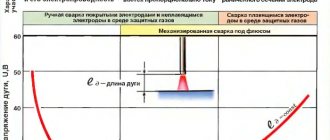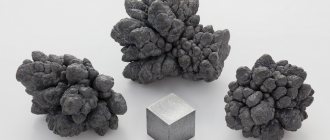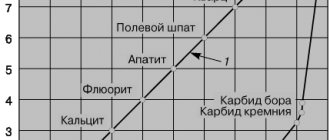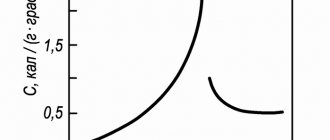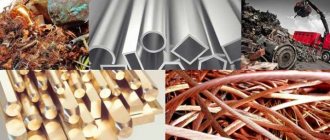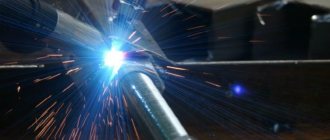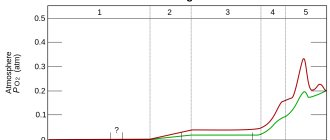The welding arc has been used by mankind for the permanent, hermetically sealed connection of metals for more than a century. The physicist Volt studied it. Then welding devices appeared. An electrical discharge occurs when there is a short circuit between the electrode and the part being welded. Electrical energy is converted into thermal energy and a melt pool is formed. A diffuse homogeneous layer of metal is created at the site of the welded joint.
Having studied the current-voltage characteristics of the process, scientists improved the welding process and created welding machines that support stable arc burning.
What is a welding arc, definition
What can be called a welding arc is, in fact, a long-lasting conductor consisting of ionized particles, existing in time thanks to a supporting electric field. An arc discharge is characterized by a continuous form, high temperature, and occurs in a gas environment capable of ionization.
In welder's textbooks, the definition of a welding electric arc is as follows: this is a long-term electrical discharge in a plasma consisting of a mixture of ionized air or shielding gases, as well as evaporated components of the filler and base metal.
Nature and structure
In a short time, the metal can be heated to its melting temperature using a powerful welding arc. Its properties are characterized by current density and current-voltage indicators. From the point of view of electrical engineering, an arc column is an ionized gas conductor between the cathode and anode with high resistance and the ability to glow. A detailed examination of the structure of the welding arc will help to understand the essence of temperature effects. The average length of the electric arc is 5 mm, it is divided into main zones:
- anodic, it is no more than 10 microns;
- cathode, it is 10 times smaller than the anode;
- pillar - a visible luminous strip.
The temperature of the welding arc is determined by the flow of free electrons. They are formed at the cathode spot. It heats up to 38% of the plasma temperature. In an arc column, electrons move towards the anode and positive particles move towards the cathode. The column has no charge of its own; it remains neutral. Inside, the particles are heated to 10,000°C, while the metal is heated on average to 2350°C, the standard temperature of the melt bath is 1700°C.
The place where electrons enter and are neutralized is called the anode spot. Its temperature is 4–6% higher than that of the cathode.
The voltage in the anode and cathode zones is significantly reduced, and no glow occurs. Only plasma that emits ultraviolet, infrared and light waves is visible. They are harmful to the organs of vision and skin. Therefore, welders use personal protective equipment.
Welding arc structure
Temperature zones
Regardless of which electrode is used - fusible or infusible - the highest temperature is observed in the center of the arc column - up to 7000 ° C.
Zones of low temperature of the welding arc are located in the areas of the anode and cathode spots, but up to two-thirds of the total energy is released in them. These are centers of radiation in the infrared part of the spectrum.
The zone of maximum temperature is a source of radiation in the ultraviolet spectrum, which is the most harmful to human health.
When using alternating current for welding work, the concept of polarity loses its meaning. The anode and cathode change places 50 or 60 times per second.
Submerged arc welding
When working with alternating current, very simple equipment is used and there is less risk of the electrode “sticking”.
However, the stability of the arc in such welding sources is very dependent on the stability of the power supply. Their operation also causes voltage surges in the electrical network.
Types of welding arc
There are several criteria for classifying a welding arc. Based on the type of welding current and the position of the electrode relative to the elements being welded, the following varieties are distinguished:
- direct action, the discharge is perpendicular to the workpiece, parallel to the electrode;
- indirect action, the discharge occurs between two electrodes inclined to each other at an angle of 40 to 60°, and the metal.
Column plasma composition classification:
- open type occurs in the air atmosphere due to components evaporating from the coating and metal;
- closed, arising under the layer of flux due to the gaseous phase formed from particles of the electrode, metal, and flux components during the passage of the discharge;
- with the supply of a gas mixture or one-component protective gas.
Arc Characteristics
The main parameters of the plasma discharge are:
- voltage;
- current strength;
- length;
- temperature.
The main parameters of a plasma discharge are voltage and current.
The interdependence of the first 2 parameters is drawn in the form of a graph.
It has 2 parts:
- Dynamic. Suitable for conditions where the working gap changes.
- Static. Displays the dependence of parameters at a constant arc length (steady state).
There are 3 areas in the graph:
- Falling. It means a sharp decrease in the potential difference with increasing amperage. At this moment, a column is formed: the conductivity of the plasma changes, and the cross-sectional area of the current becomes larger.
- Tough. Suitable for conditions where the voltage drop and current density are stable. This is explained by the fact that as the amperage increases, the cross-sectional area of the plasma increases proportionally.
- Increasing. At this stage, the interdependence of potential difference, current strength and arc resistivity corresponds to Ohm's law.
The graph allows you to estimate the discharge power.
Application area
The arc is used in the following types of welding:
- Semi-automatic. Semi-automatic welding is based on the use of refractory tungsten consumables. Filler wire is fed to the arc.
- Manual. Handmade works are the most common. This is the simplest method.
- Automatic. Automatic machines at industrial sites are more common because they are simpler in design.
The arc is used in manual, semi-automatic and automatic welding.
When welding with open plasma, a rigid arc is used; in submerged arc welding or with the supply of shielding gas, an increasing arc is used.
Recommended reading: The difference between AC and DC welding
Tension strength
This parameter depends on 2 others:
- welding current;
- arc length.
The nature of the relationship is determined by the method of performing the work. In manual welding, as the voltage of the current source decreases, it also drops in the arc. This can be seen on the current-voltage graph. Automatic arc voltage depends only on its linear size, and is directly proportional. There is a limit above which the potential difference does not rise when the plasma discharge is stretched. It remains at this level until the arc dies out.
Tension affects the quality of the seam. If it increases, it becomes wider with a simultaneous decrease in the depth of penetration.
Burning time
Depending on the duration, there are 2 types of arc:
- permanent (stationary);
- impulse.
Depending on the duration of combustion, a constant and pulsed arc are distinguished.
The second is used in resistance welding, when current is briefly passed through 2 parts pressed against one another. As a result, the metal in the junction zone melts and a monolithic joint is formed.
Repayment terms
The arc burns when the value of its own resistance does not exceed a certain limit. This parameter increases with the length of the discharge. Accordingly, when the electrode is removed from the workpiece, the arc goes out.
This can also happen during operation if the welding parameters are selected incorrectly. The condition for arc stability is the equality Ue – I*R = Ud, where:
- Ue – potential difference at the terminals of the power source;
- I*R – voltage drop across a resistor connected to the welding machine circuit;
- Ud – the same on the arc.
If the inequality is violated, extinction becomes possible. Graphically, this looks like the location of the current-voltage characteristic of the arc above the straight line indicating the voltage drop across the resistor R.
Magnetic field dependence
From the definition of an arc it follows that it is a flow of charged particles in a plasma. This means that a magnetic field is formed around it, like around any conductor. Its lines of force are cylindrical.
A magnetic field is formed around the arc.
If the arc is in a third-party magnetic field, it will interact with its own. The discharge will become unstable.
A striking example is the so-called. magnetic blast effect that occurs when welding with direct current.
It is accompanied by the following harmful phenomena:
- A sharp shift of the pillar.
- Frequent arc breaks.
- Changes in sound, periodic claps.
As a result, the quality of the seam suffers and uncooked areas appear.
Magnetic blowing is caused by 2 reasons:
- The current in the workpiece induces a strong field. It pulls the arc column in the direction opposite to the terminal connection point.
- An array of iron or an alloy based on it, being a ferromagnetic body, causes a condensation of the field. This is explained by lower resistance to the passage of power lines compared to air. As a result, the arc shifts towards the array.
- There are powerful sources of electromagnetic radiation nearby.
The blowing effect is observed when welding with high current, since the field intensity is directly dependent on the amperage.
The blowing effect is observed when welding with high current.
Measures to combat the phenomenon:
- Reducing arc length.
- The electrode is positioned at an angle so that the end faces the direction of the magnetic blast.
- Moving the terminal closer to the arc.
- Installation of a protective screen.
- Grounding of connected parts.
When welding with alternating current, the magnetic blast is much less pronounced.
Temperature along length
The peculiarity of the structure of the welding arc lies in the temperature distribution. When welding with a refractory electrode, the cathode spot is heated to 2400-2600 °C, the anodic spot is 4-6% higher, i.e. up to 2500-2750 ˚С. The pillar is the hottest: its temperature reaches 6000-8000 °C.
Combustion conditions
The essence of the welding process is the conversion of electrical energy into thermal energy.
To maintain the welding column, it is necessary to create conditions for rapid ionization of the gas: the parts are heated so that the air around them is warm, or a gas capable of ionization is supplied to the working area. Particles of alkali and alkaline earth metals are most easily ionized. When current is passed through the rod, their particles become active.
To prevent the arc column from extinguishing, it is important to maintain a constant temperature in the cathode region. It directly depends on the chemical composition of the cathode and its area. The required temperature is maintained by a current source; in industrial conditions it reaches 7 thousand degrees.
How does an electric welding arc occur?
Like any electrical discharge, a welding arc appears when a circuit is closed. The occurrence of current when the electrode touches the metal being welded leads to the generation of a large amount of heat. At the point of closure, a melt appears, it reaches behind the tip of the electrode, a neck is formed, which instantly sprays due to the strong current. Ionization of air molecules and the protective cloud occurs; they carry a flow of electrons.
The direction of the flow depends on the type of current. The arc is ignited using direct current of reverse and direct polarity, and alternating current. The frequency of extinction and ignition of the electric arc depends on the parameters of the operating current.
How to adjust arc length
Not only electrical quantities, but also the quality of welding depend on this parameter. They strive to make the arc as short as possible, within 3-4 mm.
With a longer length, the following negative phenomena are observed:
- Drops of molten metal from the electrode on the way to the weld pool manage to absorb a lot of oxygen and nitrogen from the air. As a result, the seam loses strength, ductility and toughness.
- The discharge moves along the surface of the workpiece (wandering), as a result of which the heat is distributed over a relatively large area. The penetration depth decreases; drops of melt from the consumable, falling on unheated metal, do not merge with it, but bounce off.
We recommend reading How ultrasonic flaw detection is used
A short arc produces a dry crackling sound, reminiscent of oil sizzling in a hot frying pan.
With a long welding arc, negative phenomena are observed.
The seam she made looks neat and has the following characteristics:
- Correct form.
- Smooth convex surface.
The seam, made with a long arc, has uneven outlines, and drops of molten metal stick along it.
The consumable electrode decreases during the welding process. Therefore, it is gradually brought closer to the workpiece so that the discharge length remains constant.
How is the power of a welding arc determined?
The power parameters of the electric arc are influenced by several factors:
- voltage, increasing leads to an increase in power only in a small range, there are restrictions on the size of the electrode;
- current strength, high amperage ensures stable combustion;
- The magnitude of the plasma voltage is proportional to the power.
The length of the welding arc is the distance from the weld crater to the tip of the electrode. The volume of heat released depends on this value.
The power of the welding arc determines the melting rate of the metal. The time required for welding work depends on this characteristic. The current intensity is adjusted to adjust the temperature in the working area; even on a long pole, the electric arc will not die out with a large amperage. The voltage is rarely changed during the welding process.
Application area
The welding arc is used in manual electric arc welding, which has become a reliable assistant for professionals and home craftsmen. Manual welding uses fusible electrodes coated with a flux compound. During the welding process, the rod material melts, forming the weld material, and the coating, when burned, releases a cloud of gases that protect the weld pool from exposure to oxygen. Manual welding is used both when working with conventional unalloyed structural steels and in unique welding operations on stainless, high-alloy alloys and non-ferrous metals.
The same arc is used in semi-automatic installations. Instead of an electrode, they use a welding wire fed by a mechanical device at a constant speed. Inert gases are pumped into the working area through the burner nozzle. This technology is characterized by optimal consumption of welding materials and high stability of weld parameters. Due to the high cost of the equipment, it is cost-effective for large volumes of welding work.
Automatic welding is carried out in special hermetically sealed volumes filled with inert gas. It is used for welding work with non-ferrous metals and especially critical operations with stainless alloys.
Volt-ampere characteristics
The current-voltage characteristic describes the dependence of current parameters. Using this graph determine:
- arc power;
- burning time,
- extinction conditions.
Dynamic current-voltage characteristic describes the unsteady state of an electric arc when its length fluctuates. The static current-voltage characteristic reflects the dependence of voltage on amperage at a constant arc length. The graph is divided into three areas:
- falling - as the current increases, the voltage drops sharply, this is due to the formation of a column: the cross-sectional area of the plasma flow increases, the electrical conductivity of the plasma changes;
- hard, this is a section of stable current density and voltage drop, with an increase in amperage from 100 to 1000 A, the diameter of the arc column increases proportionally (the anode and cathode spots change, respectively);
- increasing, characterized by a constant size of the cathode spot, it is limited by the diameter of the electrode; with increasing amperage, according to Ohm's law, U, R of the arc column increases.
Static current-voltage characteristics of the welding arc: 1 - falling; 2 - hard; 3 - increasing.
The current-voltage characteristic of the process of conventional manual welding using consumable and non-consumable electrodes in air or in a cloud of shielding gas is limited to the first two areas; the amperage does not reach the third. Mechanized welding using fluxes corresponds to the schedule of regions II and III, welding with a consumable electrode in a cloud of a protective atmosphere - III.
The nature of the phenomenon
The arc formation process is as follows:
- The welder touches the metal workpiece with the electrode for a split second.
- At the moment of contact, a short circuit occurs, accompanied by the flow of high current and, as a consequence, a powerful release of heat.
- The metal melts at the point of contact. It becomes viscous and viscous.
- At the moment the consumable is separated from the workpiece, a drop of melt trails behind it.
- Lengthening, it becomes thinner with the formation of the so-called. cervix. At some point, it evaporates and turns into a cloud of charged particles. At the same time, due to the high temperature in this zone, the air or shielding gas is ionized.
- Under the influence of an electric field, negative charge carriers rush to the anode, positive charge carriers - to the cathode. The process of current flow in the plasma begins.
At the moment of contact, a short circuit occurs and the metal at the point of contact melts.
Each stage lasts milliseconds, the discharge occurs almost instantly. The current is then maintained by the emission of electrons at the cathode. On their way to the anode, they ionize gas and metal vapor, increasing the number of free charge carriers.
Modern welding machines are equipped with a high-frequency vibration generator (oscillator). This device allows you to excite the arc in a non-contact manner.
Under what conditions does combustion begin?
An electric welding arc occurs at a current strength of 10 to 1000 A and a potential difference of 15-40 V. In cold air, ignition is difficult because it is weakly ionized. Under such conditions, the workpiece is heated or warm shielding gas is supplied.
Arc Power Supplies
To create a discharge, both direct and alternating voltages are used. In the first case, the weld is of higher quality, and the metal spatters less.
The current from the 220 V network is converted by a transformer, giving an output of 15-40 V.
In order to reduce its dimensions, modern welding machines use a circuit consisting of the following units:
- Input rectifier.
- An inverter is an electronic device with fast-switching transistors controlled by a microcircuit.
- Transformer.
- Output rectifier.
The inverter is the arc power source.
The inverter converts direct current into alternating current with a frequency of up to 80 kHz. This allows not only to reduce the size of the transformer, but also to increase the efficiency of the device.
The source parameters are selected taking into account the method of performing the work. For example, during manual welding, the arc length fluctuates, so you need a device with a steeply falling current-voltage characteristic. Thanks to it, the discharge does not go out when stretched, and when it is shortened, the current does not become too large.
When welding with a consumable electrode, drops of metal flow from it onto the workpiece. At such moments, a short circuit current occurs that exceeds the arc current by 20% -50%. It burns out the formed metal bridge, and the plasma discharge is formed again. These fluctuations occur in short moments of time, so the source must quickly respond to them, stabilizing the potential difference.
We recommend reading Features of flux-cored wire welding
What and how power is determined
Plasma is a conductor with electric current flowing through it. This means that the question of how the power of a welding arc is determined is given the same answer as for any resistor: voltage and amperage. The rate of heat release is equal to the product of these quantities.
The power varies with the current strength, which depends on the length of the arc.
Increasing the potential difference allows you to increase power only within small limits. In addition, the possibility of such adjustment is limited by the size of the electrode.
More often, the power is varied by the current strength, which, in turn, depends on the length of the arc. At the same time, the heating temperature of the metal changes, and with it the speed of work.
Arc Features
Due to its special properties, the electric arc is used when welding with refractory and consumable electrodes. It quickly heats the metal, forming a melt pool. Electric current is efficiently converted into thermal energy with minimal losses.
By the nature of its origin, the electric welding arc can be compared with other types of electric charges. The main distinctive characteristics of the arc:
- high temperature created by a dense current (amperage depends on the length of the column, reaches thousands of A per cm2);
- small values of the anode and cathode voltage drop, weakly dependent on the initially specified voltage;
- uneven distribution of electric field voltage between the poles;
- spatial stability;
- self-regulation of power, current-voltage characteristic;
- clearly defined boundaries that are clearly visible in the environment.
Ignition is carried out in two ways:
- short touch (the electrode is placed end-to-end, increasing the risk of sticking);
- by striking (impossible in hard-to-reach places).
Structure and zone of the anode spot
There are 3 sections in the structure of the arc:
- Cathode spot. It is the site of acceleration and emission of electrons and has a negative charge. The size of this zone is approximately 1 micron (0.001 mm). 38% of the heat is released here, the voltage drop is 12-17 V.
- Arc pillar. Has a neutral charge because positive and negative particles are present in equal quantities. The average length is 5-10 mm. In this area, 20% of the heat is released and 2-12 V is lost.
- Anode spot. Bombarded with electrons, which gives it a concave shape (crater). The length of this zone is 10 µm. 42% of heat is released, 2-11 V is lost.
Structure and properties of the electric welding arc.
The given data are typical for welding with a refractory electrode.
